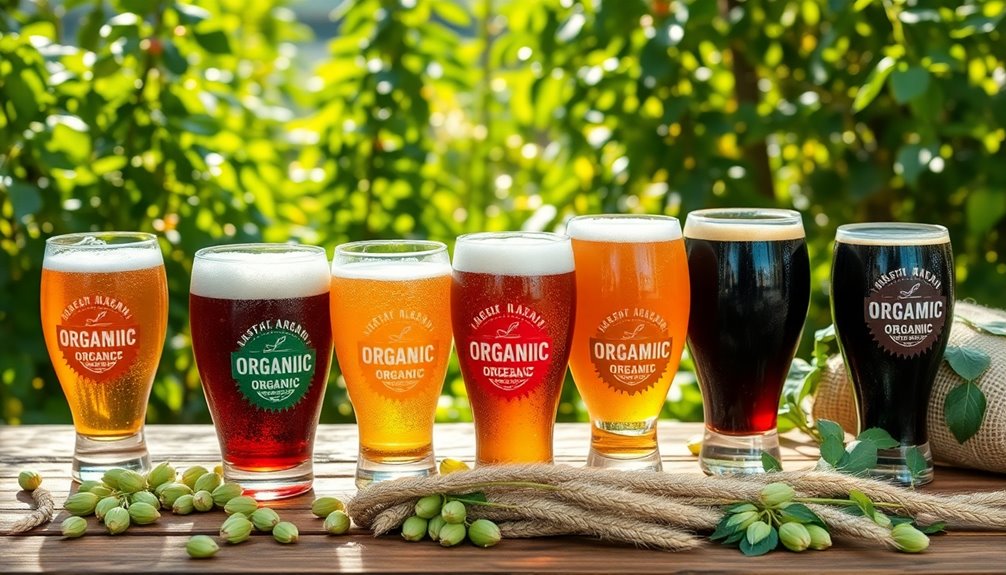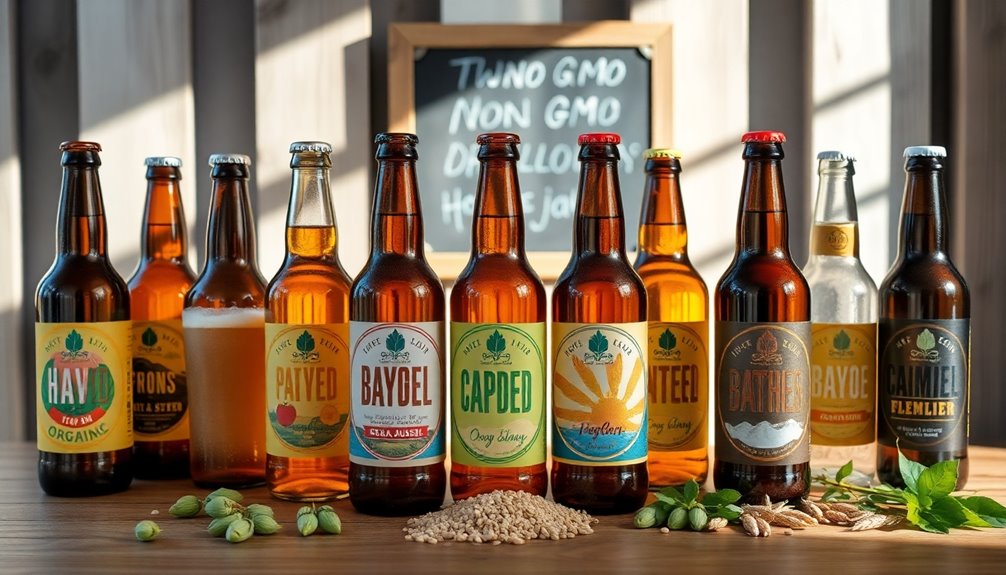Single-origin coffee comes from a specific region, farm, or cooperative, showcasing unique flavors influenced by the local climate, soil, and altitude. It offers a richer, more complex tasting experience compared to blended coffees and often reflects sustainable farming and ethical practices. With transparent information about its source, each cup connects you to the land, community, and culture behind it. If you’re curious, exploring more will reveal how these coffees support environmental health and fair labor practices.
Key Takeaways
- Derived from a specific region, farm, or cooperative, showcasing unique regional flavors.
- Offers a distinctive tasting experience with notes like citrus, floral, or earthy tones.
- Provides transparency about its origin, cultivation, and processing methods.
- Supports sustainable farming practices that benefit local ecosystems and communities.
- Connects consumers to the land, culture, and stories behind each cup of coffee.

Have you ever wondered what makes a cup of coffee truly special? It’s often the story behind its origin, the careful cultivation, and the unique characteristics that set it apart from mass-produced blends. When you opt for single-origin coffee, you’re choosing beans that come from a specific region, farm, or cooperative, which means you’re experiencing flavors shaped by particular climate, altitude, and soil conditions. These beans often reflect a commitment to sustainable farming practices, where growers prioritize environmental health, fair labor practices, and long-term ecological balance. By supporting sustainable farming methods, you’re helping preserve the land and communities that produce your coffee, ensuring that future generations can enjoy the same quality and distinctiveness.
Choosing single-origin coffee supports sustainable farming and reveals unique flavors shaped by specific regions and communities.
The flavor profile of single-origin coffee is what truly captivates enthusiasts. Unlike blended coffees, which combine beans from various sources to achieve a consistent taste, single-origin varieties highlight the unique attributes of their specific terroir. You might notice bright citrus notes, floral undertones, or earthy richness, depending on where the beans are cultivated. This distinctiveness allows you to appreciate the nuances that different regions impart—be it the fruity brightness of Ethiopian coffee or the chocolatey depth of Colombian beans. Because the beans are often harvested at peak ripeness and processed with care, their flavor profiles tend to be more vibrant and complex, offering a sensory experience that’s both authentic and memorable.
Choosing single-origin coffee also means you’re more likely to encounter transparency and traceability in your purchase. Many specialty roasters and farmers provide detailed information about the farm or cooperative where the beans were grown, giving you insight into how the coffee was cultivated and processed. This transparency fosters a deeper connection between you and the origin of your coffee, making each cup feel more personal. Additionally, single-origin coffees often undergo specific processing methods—washed, natural, honey—that further influence their flavor profiles, allowing you to explore a wide spectrum of tastes and textures.
Supporting farms that prioritize sustainable farming practices can also contribute to the preservation of biodiversity and healthy ecosystems in coffee-growing regions. In essence, when you select single-origin coffee, you’re not just drinking a beverage; you’re experiencing a piece of a place, a culture, and a community committed to quality and sustainability. The distinct flavor profiles invite you to taste the land’s character with every sip, while supporting farming practices that respect nature and promote fairness. It’s a way to enjoy your coffee more mindfully, knowing that your choice contributes to a more sustainable and flavorful future. So, next time you brew a cup, consider the story behind those beans—because that’s what truly makes your coffee extraordinary.
Frequently Asked Questions
How Does Altitude Affect Single-Origin Coffee Flavor?
Altitude considerably impacts your single-origin coffee’s flavor by increasing acidity and flavor intensity. At higher elevations, cooler temperatures slow bean development, leading to brighter, more vibrant flavors. You’ll notice a sharper acidity and more complex taste profile, making each sip more lively. Conversely, lower altitudes produce milder, less acidic coffees. So, if you prefer a bold, tangy cup, look for beans grown at higher altitudes to enjoy the full flavor spectrum.
What Are Common Processing Methods for Single-Origin Beans?
Imagine uncovering a secret behind each sip—processing methods reveal much more than you think. You might encounter washed, natural, or honey processing, each shaping unique flavor profiles. These techniques, carefully chosen by growers, influence acidity, sweetness, and body. When you explore single-origin beans, you’re discovering a world where processing methods craft distinct tastes—each cup a story waiting to be unraveled. Ready to taste the difference?
Can Single-Origin Coffee Be Organic or Fair Trade Certified?
Yes, you can find single-origin coffee that’s both organic and fair trade certified. Organic certification guarantees the beans are grown without synthetic pesticides or fertilizers, while fair trade practices promote equitable wages and sustainable farming. When shopping, look for labels indicating these certifications. By choosing such options, you’re supporting environmentally friendly farming and fair labor practices, making your coffee experience both ethical and high-quality.
How Does Roasting Influence the Unique Characteristics of Single-Origin Coffee?
Roasting markedly influences the coffee flavor of single-origin beans by enhancing or muting their unique characteristics. Your choice of roasting techniques determines how the beans develop, revealing subtle fruity, floral, or earthy notes. A light roast preserves these distinctive flavors, while a darker roast adds boldness and body. By adjusting roasting methods, you can highlight or balance the beans’ natural qualities, creating a tailored, flavorful cup of single-origin coffee.
What Are the Best Brewing Methods to Highlight Single-Origin Flavors?
To highlight single-origin coffee’s unique flavor profile, you should use pour-over or Chemex brewing methods. These methods allow precise control over water temperature and extraction time, revealing the coffee’s nuanced flavors. Avoid overly aggressive brewing like French press, which can overshadow delicate notes. By choosing these methods, you guarantee the distinct characteristics of your single-origin beans shine through, offering a richer, more vibrant coffee experience.
Conclusion
Now that you know what makes single-origin coffee special, you can truly appreciate its unique story with each sip. From lush farms to your favorite mug, you’re experiencing a taste that’s as authentic as a Viking voyage, but way less risky. So next time you brew a cup, remember you’re savoring a piece of history—no need for a time machine—just the magic of carefully sourced beans. Cheers to exploring coffee’s rich, flavorful past!










